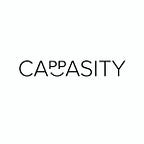Developers’ Diaries. Issue #5: 3D View format — How Cappasity Solves the Problem of Mass-Producing 3D Content
You know what we often hear from our clients? That 3D imagery is only worth their while if it’s created as quickly as a photograph and at the same time has photorealistic quality. We heard this back in 2015 while working on a 3D scanning solution, and ever since we’ve been developing our own 3D shooting solution and 3D View data format (U.S. Patent Pending). In 2017, we launched our platform and released the first version of the format. Ever since we’ve been constantly improving it, and version five is now underway.
So, what is our format based on and why did we build Cappasity platform and are developing an ecosystem? Right now, we are concentrating on two areas: e-commerce websites and mobile apps; AR/VR apps for education, art, and other use cases that don’t require specialized 3D content.
How do we solve the problem of creating 3D image in a matter of minutes, with the resulting 3D image that looks as good as a photo? To do this, we need to step away from traditional methods, such as 3D modelling and 3D scanning. Neither of these can produce a photorealistic 3D image: the result is going to look like a computer-generated image no matter what. Manual 3D modelling is a time-consuming process that can take several days. 3D scanning doesn’t work for black, shiny or transparent objects, that is almost 80% of products that could benefit from 3D product imaging, particularly in the luxury segment. This is why most startups in the market sooner or later find themselves facing the same problem: they are unable to provide high-quality 3D content to their clients and can’t scale up their business.
Here is where we step in.
We use any camera that is already available to our clients. We extract photographic data, read the 3D data obtained from the videos of the rotating object on the turntable, and establish the object’s outlines — all that happens in Easy 3D Scan. The final result is on the cloud, broken up into data segments for easier streaming. This means that you only need to download a couple of megabytes to start interacting with a 3D View. This is important for online stores as download speed is one of their most crucial parameters. We have a true high-quality zoom feature — our zoom data is stored separately and loaded when the user needs it.
Our infrastructure is designed in such a way that it can be easily scaled up for different geographic regions thanks to the fast CDN which our clients get access to.
Anyway, how is our format compatible with VR/AR? We provide Unity and Unreal Engine plugins that allow you to connect to a Cappasity account and use 3D View format in VR/AR apps. This means that all our users are able to provide new experience to their customers.
Can you even imagine being able to create 3D content for your VR/AR app in just a day without needing a 3D artist?
Check out how the current version of our plugin works in Unity:
